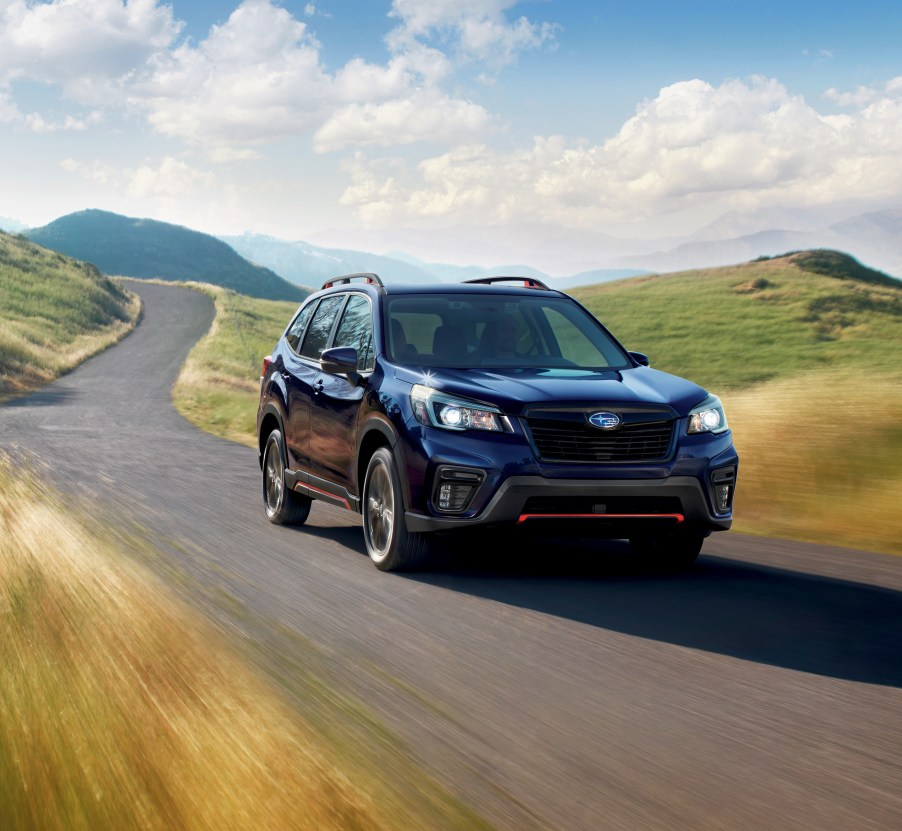
5 Reasons the Subaru Forester Sport Is Better Than the Honda Passport Sport
If you’re looking for a two-row, mid-size SUV, then you’re in luck because the playing field is growing by the year. However, in case you’re looking at two of the most popular options like Subaru Forester or Honda Passport, then you might be split on which one could be a better buy.
While both SUVs have a lot of offer and they’re both great no matter which trim level you end up going with, we decided to compare the Sport trim levels of each SUV because they’re closely matched when it comes to pricing and they’re both “sporty.” However, upon closer inspection, we found that the Subaru Forester Sport is better than the Passport Sport in five different ways.
Symmetrical All-Wheel Drive
Subaru’s renowned Symmetrical All-Wheel-Drive system has been around for ages and it’s safe to say that they have almost perfected driving with all four wheels. Don’t get us wrong, the Passport’s Intelligent Traction Management all-wheel-drive system is great, too, but it’s a “part-time” system.
The all-wheel-drive system found in the Subaru Forester can split power evenly and is what’ considered a full-time all-wheel-drive system, whereas the Passport will mainly drive on the front wheels unless it needs to send power to other wheels when slippage occurs.

Standard Apple Carplay and Android Auto
This one might seem a little trivial, however, phone integration is getting more and more important nowadays since most new cars come standard with it. In order to get Apple Carplay or Android Auto in a Honda Passport, you’ll need to step up to a higher trim level than a Sport.
However, if you opt for the Subaru Forester Sport, you’ll get to enjoy the seamless phone integration as a standard feature. No need to go to the higher trim level.

Better gas mileage
The Honda Passport is powered by a 3.5-liter V6 engine, so it’s no surprise that it will likely do better when it comes to powering the vehicle through off-road and high-elevation situations. However, when it comes to regular driving, fuel economy is more important than power.
In that case, the Subaru Forester’s 2.5-liter, four-cylinder engine wins as it’s capable of 26 mpg in the city and 33 mpg on the highway. For reference, the Passport is rated at 19 mpg city and 24 on the highway, so you’ll definitely be spending more for gas if you go with the Honda.

Subaru’s X-Mode
The Honda Passport does come with a “traction management” feature in which the user can switch between driving modes: snow, normal, mud, and sand. However, the Forester has that too in the form of Subaru’s X-Mode.
What is X-Mode? Activating X-Mode on the Forester maximizes the power split between the wheels that have the most traction and modulates the accelerator in order to smoothly and easily get the car out of a deep snow or mud situation. The Passport’s system is still good, but the Forester’s system is just a little better.
It also has Hill Descent Control, in which the Forester manages the throttle and braking when going down steep hills, the driver just needs to control the steering.

Better ground clearance
If you’re planning to do any light off-roading, then either of these cars would work well, however, ground clearance is important. In that case, the Forester bests the Passport’s ground clearance by 0.6 inches (8.7 inches vs 8.1 inches).
Yes, we know, it’s not a lot. However, every little bit counts when it comes to being “capable” or not.

Not exactly in the same class
While the Subaru Forester is technically in the same class as the Honda CR-V, as opposed to the Passport, we felt that these two stacked up better in terms of off-road capability.
And while the Honda Passport is a formidable competitor, we feel that the Subaru Forester can hold its own when it comes to being a well-rounded and capable SUV



